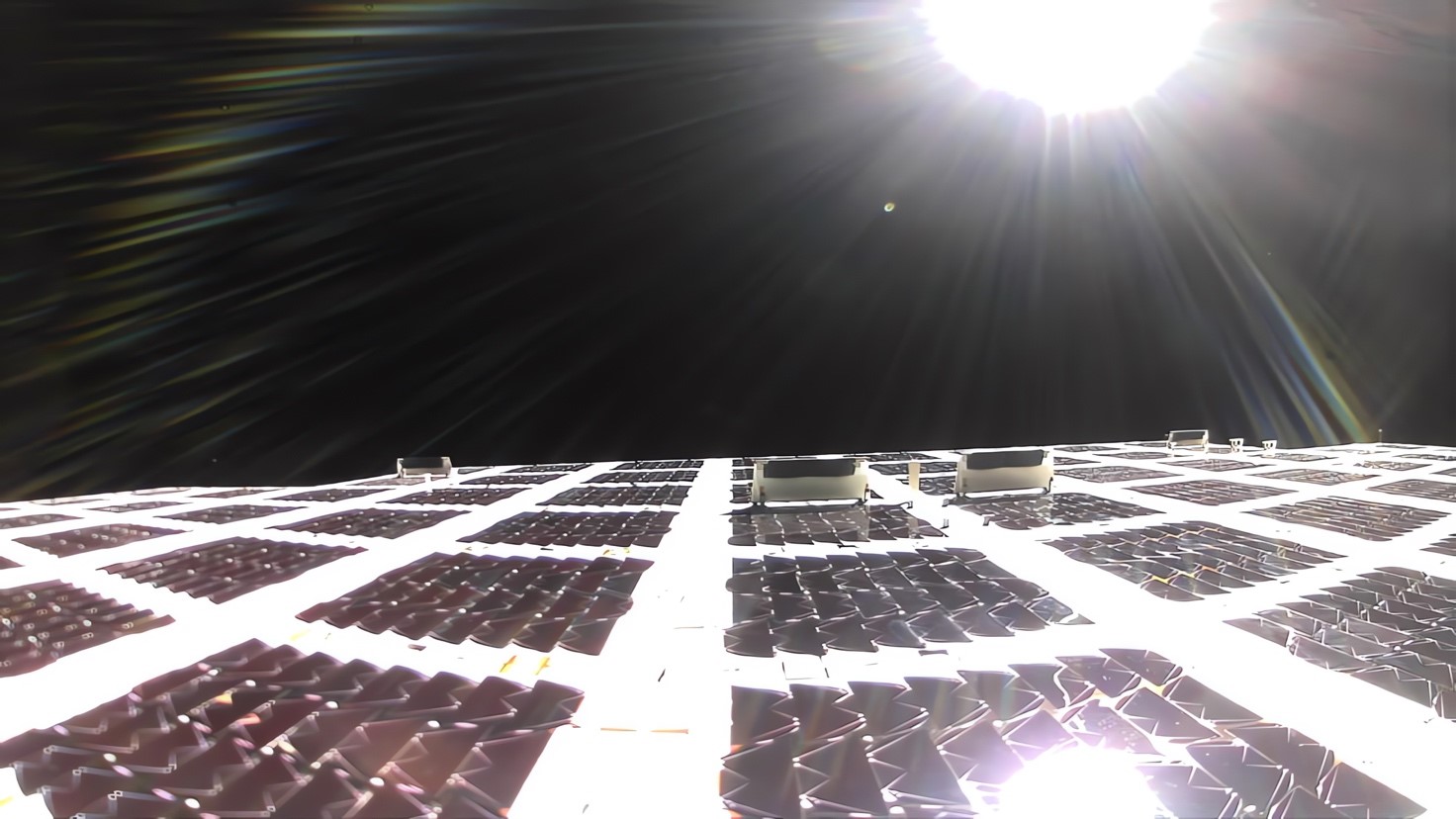WASHINGTON — NASA has signed an agreement with AST SpaceMobile to cooperate on spaceflight safety, even as astronomers grow increasingly concerned about the effects of that company’s satellites.
NASA announced Dec. 15 it signed agreement with the company to create what it called “a deeper level of coordination, cooperation, and data sharing” between the two regarding satellite operations, including avoiding conjunctions between their satellites and launch collision avoidance.
The focus of the agreement is with on BlueWalker 3, the AST SpaceMobile satellite the company launched in September and which deployed its large phased-array antenna in mid-November. It also includes the company’s future BlueBird constellation, for which BlueWalker 3 is a prototype.
In its own statement, AST SpaceMobile said it will collaborate with NASA’s Conjunction Assessment Risk Analysis program on spaceflight safety practices. It will also provide the U.S. Space Force with updated predictions of its spacecraft’s trajectories through the Space Track service, allowing the Space Force to predict potential conjunctions up to a week in advance.
“This agreement formalizes a commitment between AST SpaceMobile and NASA to share information and help safeguard low Earth orbit,” said Raymond Sedwick, chief scientist of space systems at AST SpaceMobile, in a statement.
While even the full BlueBird constellation of dozens of satellites is significantly smaller that megaconstellations like SpaceX’s Starlink, NASA had previously said the proposed size of the antennas on those satellites, designed to enabled direct-to-smartphone communications, posed a hazard because it gave the satellites a cross-sectional area far larger than other spacecraft. AST SpaceMobile has since reduced the size of those antennas.
NASA stated that another factor in the agreement is that AST SpaceMobile’s satellites use what the agency described as a “high impulse, low thrust maneuvering system that may require complex risk mitigation maneuver plans.” The improved interaction between NASA and AST SpaceMobile enabled by the agreement, NASA said, ensures “all parties involved are fully aware of the exact location of spacecraft and debris in orbit resulting in a safer space environment for all.”
NASA signed a similar agreement with SpaceX in March 2021 regarding spaceflight safety involving Starlink satellites. As part of that agreement, SpaceX agreed that, in the case of any potential conjunctions between Starlink and NASA spacecraft, it would maneuver the Starlink satellites to avoid them. The NASA-AST SpaceMobile announcements did not disclose if there is a similar provision.
While NASA says the agreement with AST SpaceMobile improves spaceflight safety, another group remains concerned about the effects of the company’s satellites. The large size of the BlueWalker 3 antenna means it reflects enough sunlight that, at times, it can be one of the brightest objects in the night sky, to the dismay of astronomers.
In a Nov. 28 statement, the International Astronomical Union (IAU) Center for the Protection of the Dark and Quiet Sky from Satellite Constellation Interference, also known as CPS, said it was concerned about both the brightness of the satellite as well as its use of spectrum reserved for terrestrial applications that could interfere with radio astronomy.
In the statement, CPS said that BlueWalker 3, after deploying its 64-square-meter antenna, can reach a brightness of magnitude 1, placing it among the 20 brightest stars visible. By contrast, Starlink satellites, which have concerned astronomers since SpaceX started launching the constellation in 2019, have a brightness between magnitude 6 and 7 once in their operational orbits, too dim to be seen by the naked eye but which can still interfere with astronomical observations.
Radio astronomers are concerned that AST SpaceMobile satellites could interfere with observatories even in radio-quiet areas that limit terrestrial use of those frequencies. “Frequencies allocated to cell phones are already challenging to observe even in radio quiet zones we have created for our facilities. New satellites such as BlueWalker 3 have the potential to worsen this situation and compromise our ability to do science if not properly mitigated,” said Philip Diamond, director-general of the Square Kilometer Array Observatory, which is building two large radio observatories in Australia and South Africa, in the IAU statement.
“BlueWalker 3 is a big shift in the constellation satellite issue and should give us all reason to pause,” said Piero Benvenuti, director of CPS, in the statement.
The IAU said it has started discussions with AST SpaceMobile about the effects of its satellites on both optical and radio astronomy. “Recent discussions with some operators have led to mitigation measures,” the organization stated, “but much more work is needed.”
